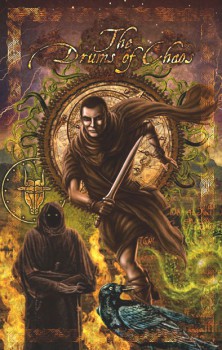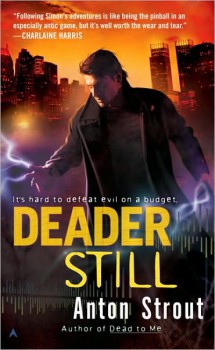Howie Bentley Reviews The Drums of Chaos
 The Drums Of Chaos
The Drums Of Chaos
Richard L. Tierney
Mythos Books (440 pages, $45, Sept 2008)
Reviewed by Howie Bentley
Simon of Gitta, Richard L. Tierney’s famous escaped gladiator turned student of the occult, has returned to the Holy Land to take revenge on the Roman officials who killed his parents and sold him into slavery. The Drums of Chaos shows Simon at his most savage as he slays his foes and writes messages on the wall in their blood. Simon is a hell hound on his enemies’ trail, but his plans start being disrupted as apocalyptic supernatural events unfold and cross his path. It seems that there are a handful of different factions of sorcerers, all with their own agendas; not excluding Jesus Christ, the son of Yahweh Zava’ot (A.K.A. Yog-Sothoth).
Although this is a Sword & Sorcery novel in the grand Howardian tradition, it is just as much about the events surrounding the crucifixion of Jesus Christ as it is about Simon’s adventures in the Holy Land. Imagine the Christ Passion viewed through the eyes of H.P. Lovecraft and you start to get an idea where this is going. Some may scoff at this portrayal of biblical events but I think, looking at it objectively, you have to admit that Tierney’s account of the crucifixion is just as plausible as the stories you hear in church, and a hell of a lot more interesting – as I often found myself on the edge of my seat while reading Drums, as opposed to slumped down in my seat asleep. This might well be considered the most blasphemous yarn of the whole literary body termed “the Mythos,” and considering the nature of the field, that’s saying something.
 Deader Still
Deader Still Gamer Fantastic
Gamer Fantastic Drood
Drood
 Curse of the Necrarch
Curse of the Necrarch Flesh and Fire
Flesh and Fire Knight of the Realm
Knight of the Realm Intelligent Design
Intelligent Design The Sorcerers’ Plague
The Sorcerers’ Plague